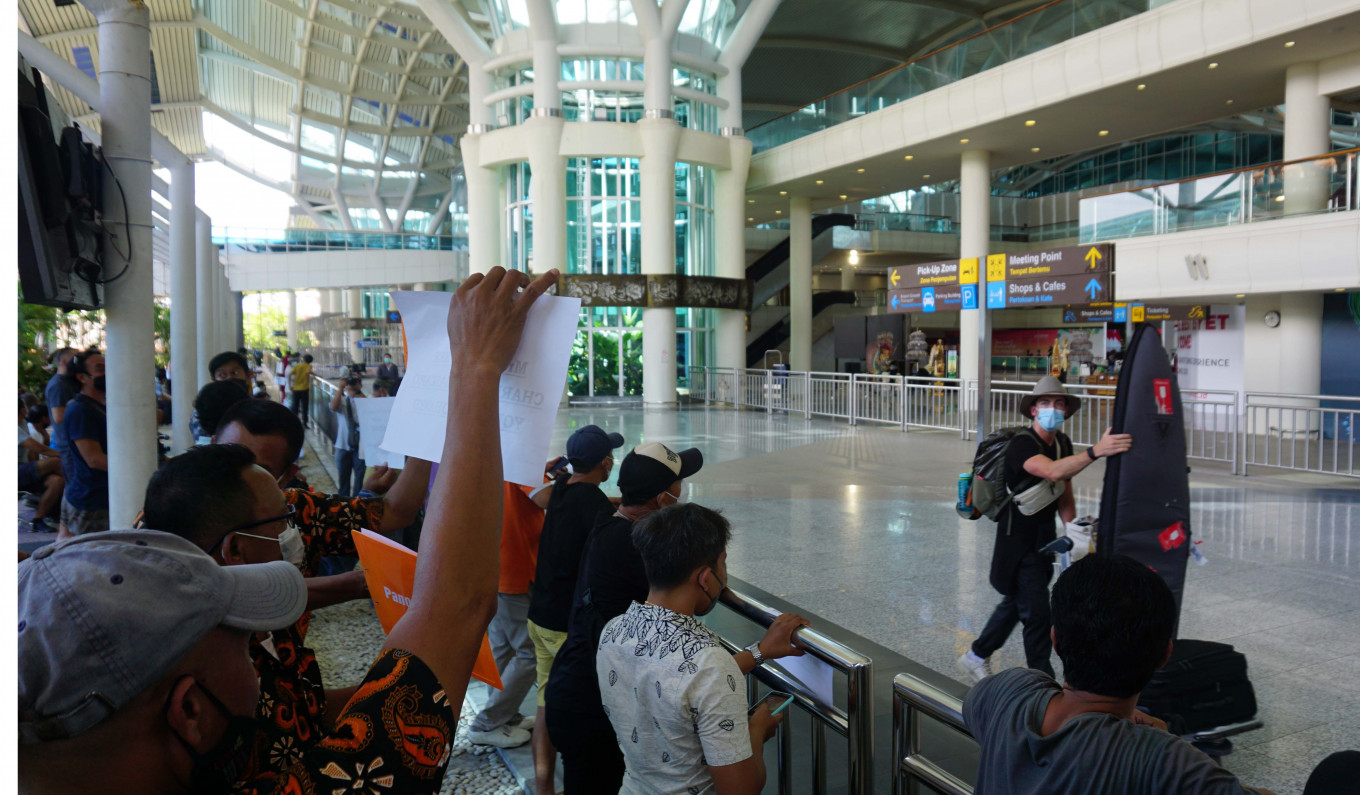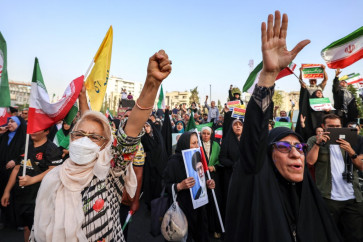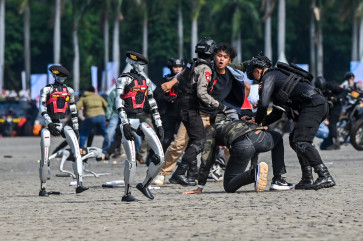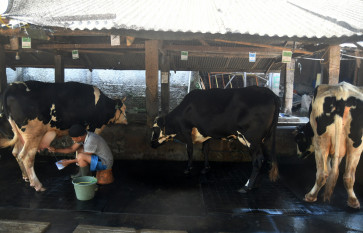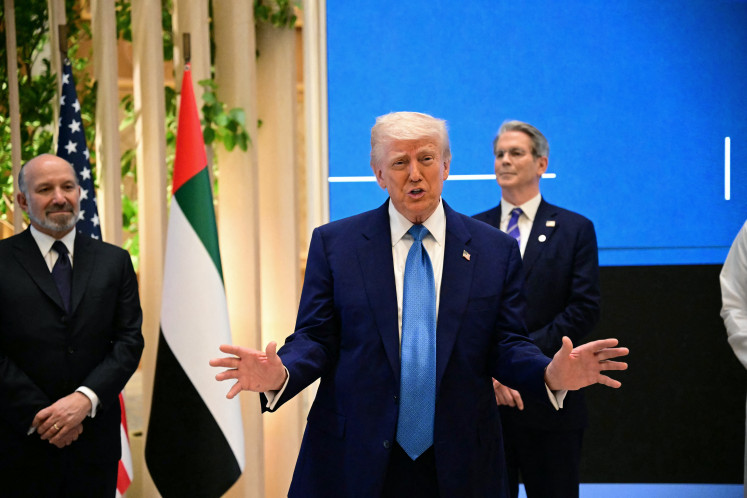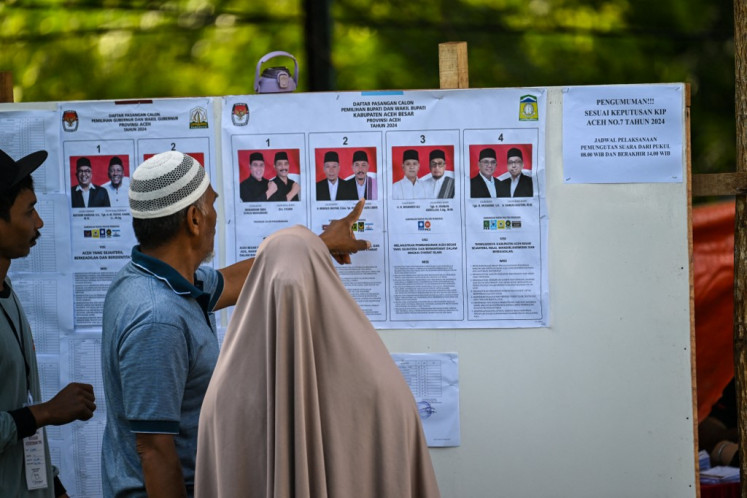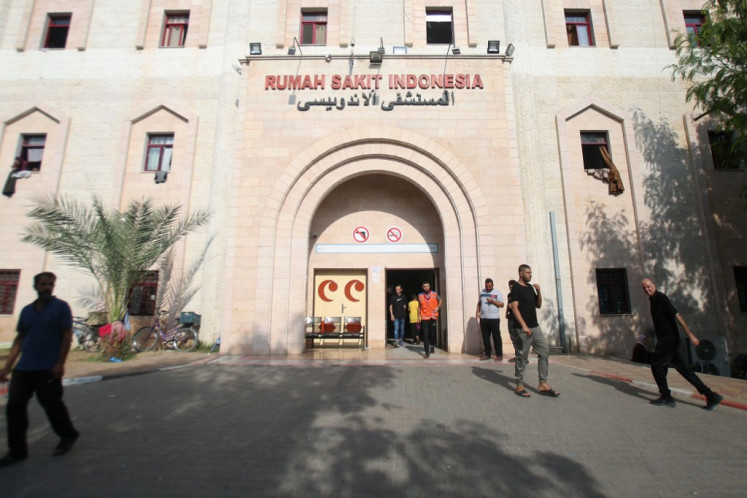Popular Reads
Top Results
Can't find what you're looking for?
View all search resultsPopular Reads
Top Results
Can't find what you're looking for?
View all search resultsCOVID-19 endemicity, explained
Mahardika of Udayana University said the decision to declare COVID-19 endemicity was more than just a public health policy – it was also a political and economic matter.
Change text size
Gift Premium Articles
to Anyone
T
he word "endemic" has become quite the buzzword in recent weeks as the Omicron-fueled surge of infections, hospitalizations and deaths substantially decline in Indonesia, and while the government continues easing restrictions that have been in place since the early days of the COVID-19 pandemic two years ago.
In broad terms, an illness becomes endemic when the rates become static in a given geographical location, meaning that the pathogen causing the disease is likely to remain in circulation without causing large outbreaks.
Many have associated COVID-19 endemicity as the end of the health crisis or a checkered flag that gives a clear line where restrictions disappear. But there is more to the term than what meets the eye.
Could COVID-19 be endemic?
Experts have said that for COVID-19 to become endemic, enough people needed to have immune protection from it – either through natural infection or vaccination.
But with research suggesting that antibodies against the virus wane over time and the emergence of new variants that could render vaccines less effective, questions remain on whether long-term immunity against the coronavirus is plausible.
Virologist I Gusti Ngurah Kadek Mahardika from Udayana University said although antibodies against coronavirus naturally waned over time, it was not the only tool the human body used to fight COVID-19.
"Even when neutralizing antibodies against coronavirus in a person reach zero, the person's memory B cells and memory T cells still remember the virus. These defenses do not prevent reinfection, but they do help to prevent severe disease," Mahardika said on Thursday.
He was referring to two immune cells that are sometimes called memory cells.
He said most people would not need another dose of vaccine after getting the third shot – although vulnerable groups, such as health workers, people with underlying health conditions and the elderly, would likely need regular vaccination.
He added that the public should not be overly concerned about the emergence of new variants because, unless the new variant was vastly different from its predecessors, the immune system would still be able to recognize it and offer adequate protection against severe symptoms.
Read also: Indonesia prepares road map to endemic status as virus wanes
Epidemiologist Dicky Budiman of Griffith University in Australia said it was still possible for a disease to become endemic even when the virus mutated frequently.
"HIV for example is one of the fastest-mutating viruses ever studied. But so far, we have been successful in keeping it as an endemic disease," he said.
How to declare endemicity
The World Health Organization declared COVID-19 a public health emergency of international concern (PHEIC) in early 2020 and later a global pandemic.
According to the University of Indonesia's School of Medicine professor Tjandra Yoga Aditama, the pandemic would be over when the WHO’s expert committee declared that COVID-19 no longer qualified as a global emergency.
"Despite this, every country has the right to designate COVID-19 as an endemic disease within its borders," Tjandra said on Wednesday.
He said although the criteria for declaring endemicity were not precisely defined, the WHO released in 2020 guidelines on public health and social measures in the context of COVID-19 that included indicators to assess the level of community transmissions in a specific region. This, he said, could be used to determine whether an outbreak in the given area was under control.
The indicators include the number of case incidences, hospitalizations, deaths, testing positivity rate and the virus' effective reproduction number (Rt), among other things.
"Scientifically speaking, we could declare COVID-19 as an endemic if the testing positivity rate was below 5 percent and the Rt stood at one or below for a long period of time – like six months or a year," Tjandra said.
The Rt rate represents the number of new infections estimated to stem from a single case at a particular time. An Rt number above one means the outbreak is in the ascendancy. When it drops below one, the outbreak is withering and dying out.
More than just caseload
Mahardika of Udayana University said the decision to declare COVID-19 endemicity was more than just a public health policy – it was also a political and economic matter.
"Designating a disease as endemic means that fewer resources and funding will be available to combat it because it will no longer be considered a public health emergency," he said.
Health Ministry spokesperson Siti Nadia Tarmizi told The Jakarta Post recently that after COVID-19 was declared as endemic in Indonesia, the government would no longer subsidize treatments and medication for the disease, meaning that people must pay for it themselves.
Read also: Jokowi says holiday exodus can go ahead this year as COVID cases ease
Epidemiologist Riris Andono Ahmad from Gadjah Mada University said the decision to declare it an endemic should also weigh the impacts of the outbreak on the healthcare system as a whole.
What lies after endemicity?
While many countries including Indonesia are eager to soon shift to endemicity, Griffith University's Dicky warned that COVID-19 could still pose a substantial threat to public health even after it became endemic.
"Endemic in itself does not mean [it is] good. Many serious diseases, including tuberculosis and HIV, are considered endemic. Yet, they kill millions of people each year and impact the economy greatly," he said.
Read also: Indonesia relaxes more curbs, lifts quarantine for fully vaccinated foreign arrivals
Riris, meanwhile, warned that even after coronavirus had become endemic, major outbreaks and waves of infections could still occur and COVID-19 might return to an epidemic level in Indonesia, which is when a disease spreads unexpectedly or quickly across a geographical area or population.
"Endemicity is not something that is final or permanent, especially considering COVID-19 is an outbreak-prone disease like dengue fever and measles," he said.
He predicted the COVID-19 would become a seasonal outbreak in the future just like dengue fever. However, instead of occurring ahead of the rainy season like dengue fever, a coronavirus outbreak would likely happen following holidays when mobility was high, like at the end of the year or Idul Fitri.

